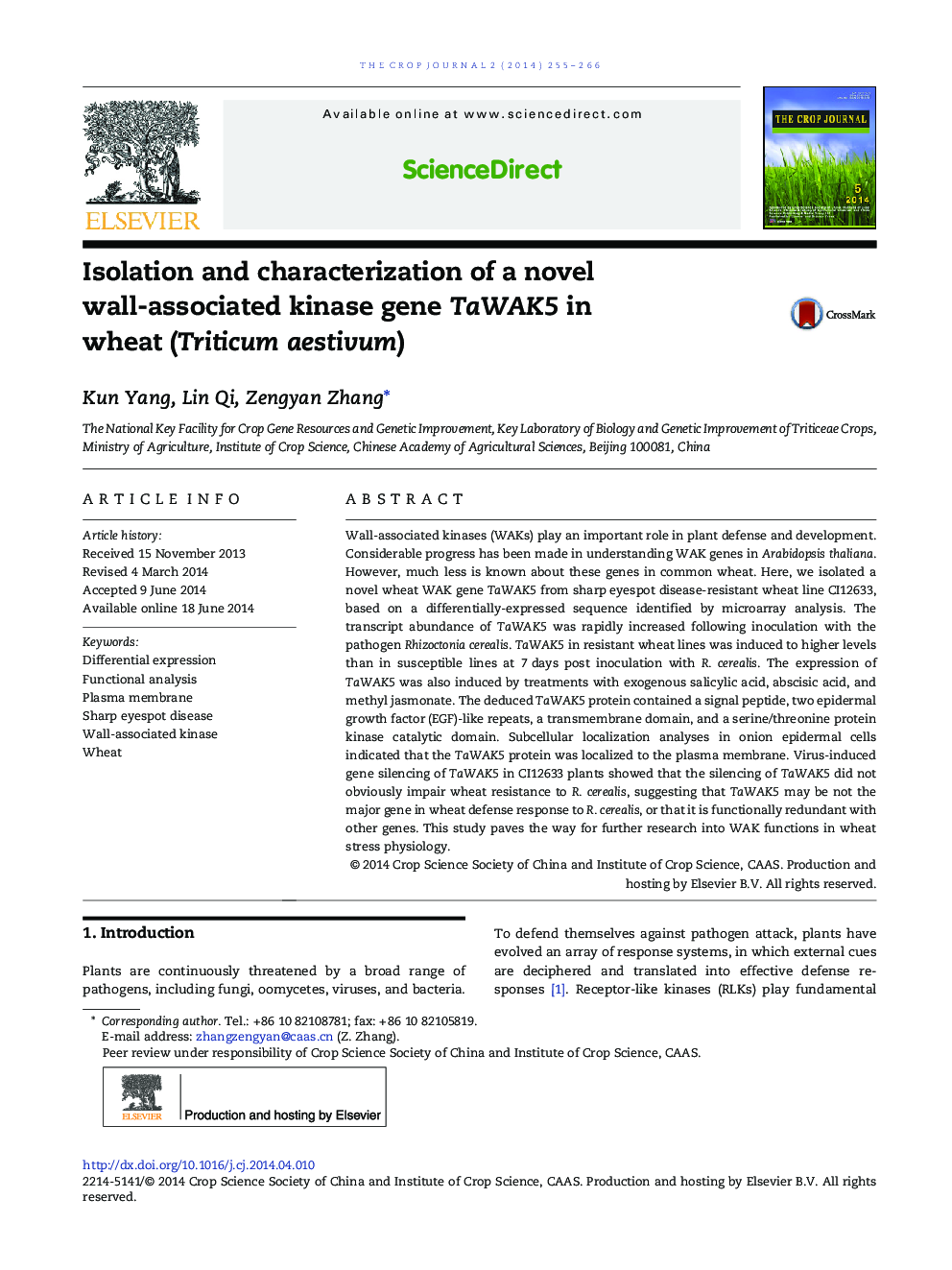| Article ID | Journal | Published Year | Pages | File Type |
|---|---|---|---|---|
| 2079507 | The Crop Journal | 2014 | 12 Pages |
Wall-associated kinases (WAKs) play an important role in plant defense and development. Considerable progress has been made in understanding WAK genes in Arabidopsis thaliana. However, much less is known about these genes in common wheat. Here, we isolated a novel wheat WAK gene TaWAK5 from sharp eyespot disease-resistant wheat line CI12633, based on a differentially-expressed sequence identified by microarray analysis. The transcript abundance of TaWAK5 was rapidly increased following inoculation with the pathogen Rhizoctonia cerealis. TaWAK5 in resistant wheat lines was induced to higher levels than in susceptible lines at 7 days post inoculation with R. cerealis. The expression of TaWAK5 was also induced by treatments with exogenous salicylic acid, abscisic acid, and methyl jasmonate. The deduced TaWAK5 protein contained a signal peptide, two epidermal growth factor (EGF)-like repeats, a transmembrane domain, and a serine/threonine protein kinase catalytic domain. Subcellular localization analyses in onion epidermal cells indicated that the TaWAK5 protein was localized to the plasma membrane. Virus-induced gene silencing of TaWAK5 in CI12633 plants showed that the silencing of TaWAK5 did not obviously impair wheat resistance to R. cerealis, suggesting that TaWAK5 may be not the major gene in wheat defense response to R. cerealis, or that it is functionally redundant with other genes. This study paves the way for further research into WAK functions in wheat stress physiology.
